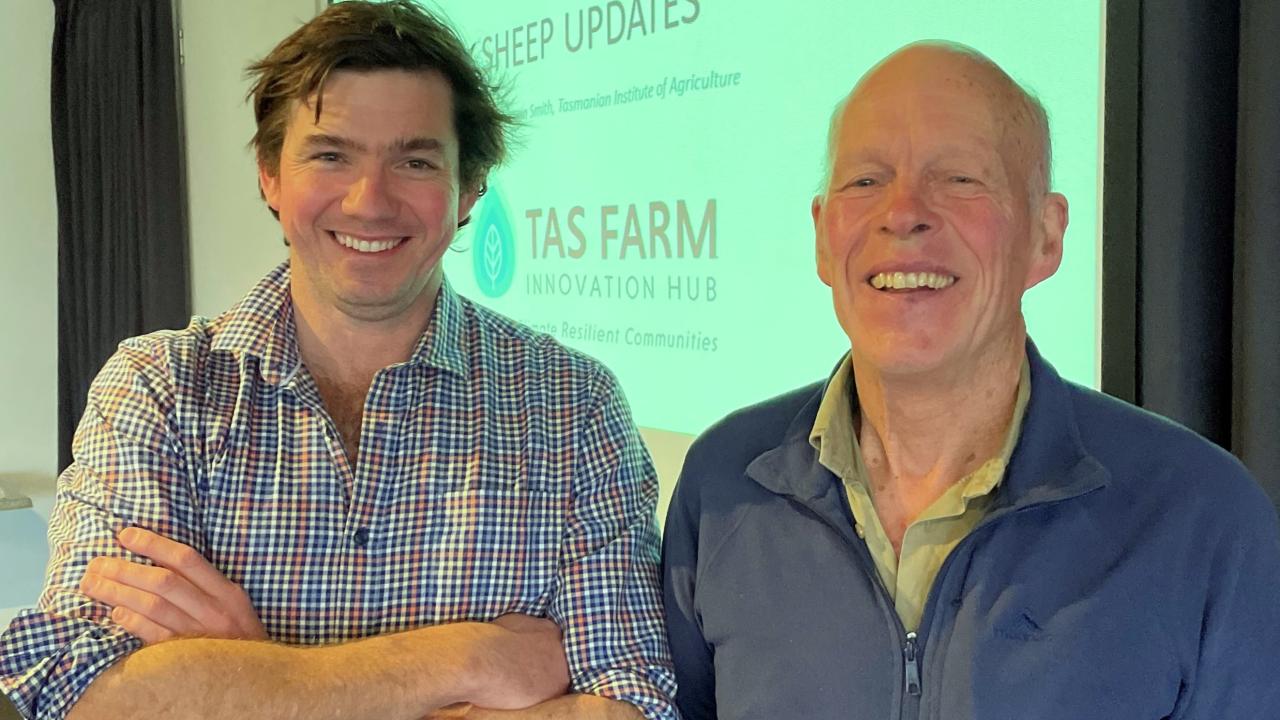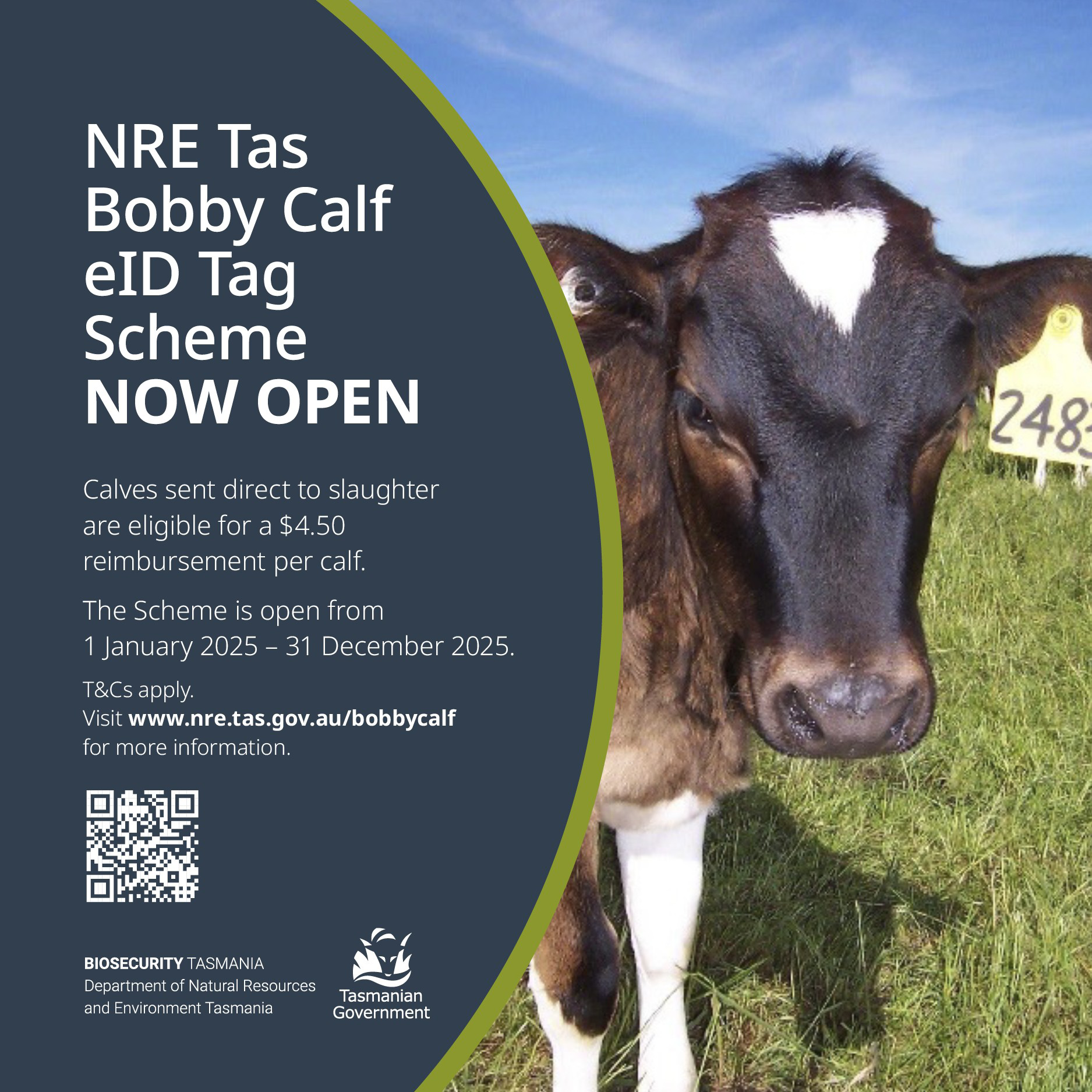Vets’ tips in a world of eID

Two experienced vets delivered invaluable advice that not only looks after the health of farm animals, but the bank balance of farmers, when they took to the podium at last week’s Red Meat Updates conference in Launceston.
Dubbo vet Dr Tim Gole and Hobart veterinarian Dr Bruce Jackson were a formidable double act, both informative and at times entertaining while giving freely of a lifetime of experience in animal welfare and agricultural research.
Dr Gole talked about the new world of electronic identification (eID) of sheep and farmed goats, a legislated requirement since January 1, before animals can leave their property of birth.
A microchip now replaces visual tags and assigns a distinctive 16-digit internal serial number that when "read" by a handheld wand or panel reader, can be electronically recorded so that data for each animal can be accumulated.
After running veterinary clinics in central West NSW and northern Australia for many years, Tim saw an opportunity to service the sheep industry at a higher level and moved to dubbo to start a business called For Flocks Sake.
It’s essentially a training and education business to help farmers transition to eID and it involves “walking the walk” with several joint venture flocks to trial and deploy concepts.
Dr Gole and his business partners have amassed more than 700,000 breeding ewes in their client base since staring the business five years ago.
In his presentation he outlined some of the key mistakes to be avoided – mistakes he learned from practical experience.
“eID is conceptually simple but can be tactically quite painful,” Dr Gole admitted.
“I always said that the secret to happiness is low expectations – it’s hard to get things perfect when it’s all new.
“My advice is practise scanning the day before the sheep are penned, make sure the Bluetooth connection works, have everything freshly charged even if you think it was fine last time you used it and to save power turn off any backlights on equipment.
“Stay away from metal poles or anything that might interfere with the signal, be aware that you can’t put spare tags in your pocket or anywhere near or it will read them too, that even means microchips in dogs!”
He also covered the basics of how it all works, the latest equipment on the market, how to store data and use the data in a controlled setting or for commercial benefit.
Dr Bruce Jackson has close to 50 years’ experience in animal health including 18 years in a large animal practice and 31 years in government, retiring from Biosecurity Tasmania in 2017 to run a veterinary consultancy.
He tackled the subject of worm drench resistance in sheep.
“The key to understanding drench resistance is to know that worms develop resistance to the drench family rather than the brand name, and that different species of worms are present at different times of the year and may have different levels of resistance to these drenched families,” he said.
“Whenever scouring doesn't respond to drenching, or 14-day post treatment worm egg count is not zero, drench resistance should be suspected and a DrenchCheck carried out.
Add wrench check is out worm it count carried out 10 to 14 days after trench to make sure the trenches killed nearly all the worms.
“Completing a DrenchCheck may be more practical than a DrenchTest due to the variation in presence of different worm species at different times of the year.”
Doctor Jackson advocated the use of combination drenches, which he said will work better when there is some resistance to each of the individual drenches.
He explained in detail how that works and also advised farmers to minimise how often they drench, give the right dose, using combination drenches, quarantine drench introduced sheep and selecting sheep for drench resistance.
“eID can be a valuable tool to assist in minimising trench use, with about 20 percent of any mob being the carriers of 80 percent of the worms,” he said.
“Individual animal match management via eID and record-keeping can assist with: drenching low weight gain lambs, not drenching the fastest growing lambs, separate drench guns for different weight classes, and treatment records to maintain compliance with the export slaughter interval.”




Add new comment